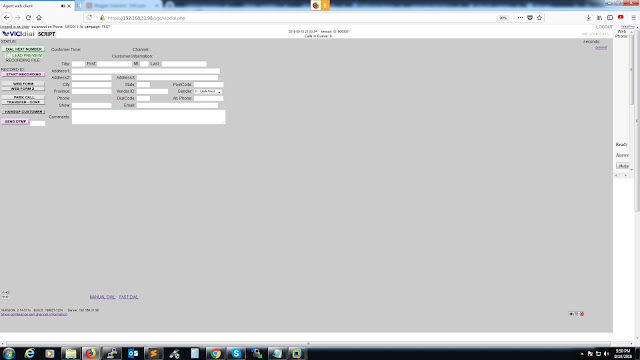
Hello everyone , here is a tutorial for how to make your PC
speak like Jarvis as in Iron Man movies . The Post is quite long , so
have patience. You just need is a basic of scripting with XML , and
that's easy too , what you need to do is just make enter some commands to some
of the windows files , its as simple as burning a candle
Really telling , when i tried it for my laptop , i thought it
would be hard enough for me to make my pc speak like that , and believe me ,
even when I looked up on the internet , i found the way too hard , but , when i
got what to do , it become a whole more lot of easy to scrap the things out of
it .
So now , what you have got is that , your computer can respond back to yo for whatever you say , now lets get to , what we should have to do all that I have told you :
Requirements :
So now , what you have got is that , your computer can respond back to yo for whatever you say , now lets get to , what we should have to do all that I have told you :
Requirements :
1.
Firstly
, you need an operating system , Windows 7 and Windows 8 , both works fine on
32-bit as well as 64-bit versions. you should have a lots of memory , at least
1 GB memory is required , but i will suggest for a 2 GB processor , at least a
dual core .
2.
Secondly
, you would need Windows Speech Recognition Software , that's inbuilt in
windows 7 and windows 8 PC. You just need to enable it.
3.
Now
you need is an important software , which windows is providing on their website
too ; Windows Speech Recognition Macros , which you can download by clicking HERE .
4.
A
microphone , that's inbuilt in laptops , but i will suggest using a separate
and dedicated microphone as it will be whole lot more easier.
5.
Lastly
we need is Speakers , as we all know .
Procedure :
Download Windows Speech Recognition Macros Software (WSRM) first . You can download it at windows website , or otherwise you may Google it to get more download links.
·
Enable
Windows Speech Recognition , which is inbuilt . Enable Windows Speech
Recognition in your Control Panel (Start Menu/Control Panel/Ease Of
Access/Speech Recognition/Start Speech Recognition). While you're at it, it's a
good idea to take the speech tutorial to familiarize yourself with some common
voice commands. You should also go ahead and visit the section that says
"Train your computer to better understand you." Neither is required,
but going through the steps provided by these tutorials will help make the
process of bossing your computer around a lot more efficient. An additional
bonus you'll get after training your computer to better recognize your voice...
less problems with it responding to ambient noises and other voices in the
room. So go ahead and take the extra 10 minutes to learn these processes.
·
Now
when you have trained your PC , its time to do some programming . Open the WSRM
by double clicking it , it always gets minimized to the task bar. To know how
to use it visit HERE . At starting
it might look like this .
·
Go
to advanced and do the programming as given below:
Before doing that , you must know about the
used strings , ie. XML strings
<speechMacros> - This is the starting
Tag, it just tells the computer that this XML file uses the Speech Macros to
execute.
<command> - This is the command to be
executed. Each command is basically one action... in most cases you will only
need one, but for some automations you'll want to include more than one. You'll
see an example of this later.
<listenFor></listenFor> - This
tells the computer what word or phrase to listen for in order to do an action.
Notice that there is a closing tag (</listenFor>), this tells the XML
that this spot in the code is where to stop doing whatever function... in this
case stop listening for a word or phrase once the computer hears it.
</command> - The closing tag for the
"Command" tag... again, in XML every tag will have an opening/closing
tag and what happens between the two is how it knows what to execute. In this
case it knows that the command is finished once the word/phrase has been
detected.
</speechMacros> - By now I think you
can figure out why this is here.
Since I'm going to name my computer Jarvis,
I'm going to tell my computer to listen for it's name by changing the
<listenFor> tags to say the following:
<listenFor>Jarvis</listenFor>
The entire macro looks like this now:
<speechMacros>
<command>
<listenFor>Jarvis</listenFor>
</command>
</speechMacros>
so we're going to add the
<speak></speak> tags which allow for the computer to speak whatever
text we insert between the tags back to us.
Now , what you write in advanced is :
<speechMacros>
<command>
<listenFor>Wake up</listenFor>
<speak>Database Check , System Online
, Hello</speak>
</command>
</speechMacros>
Go forward and save it , Sign the macros as
well . That's it . Now when you say hello to it , it replies you back .
Some examples are :
Restart Computer: (You say "Nuke
It" and the computer acknowledges and restarts your system.)
<speechMacros>
<command>
<listenFor>Nuke it</listenFor>
<speak>Restarting
Windows</speak>
<run
command="C:\Windows\System32\shutdown.exe" params="-r -t
00"/>
</command>
</speechMacros>
Shutdown Computer: (You say "Shut It
Down" and the computer acknowledges and turns the system off)
<speechMacros>
<command>
<listenFor>Shut it
down</listenFor>
<speak>End Of Line</speak>
<run
command="C:\Windows\System32\shutdown.exe" params="-s -t
00"/>
</command>
</speechMacros>

.JPG)


0 comments:
Post a Comment